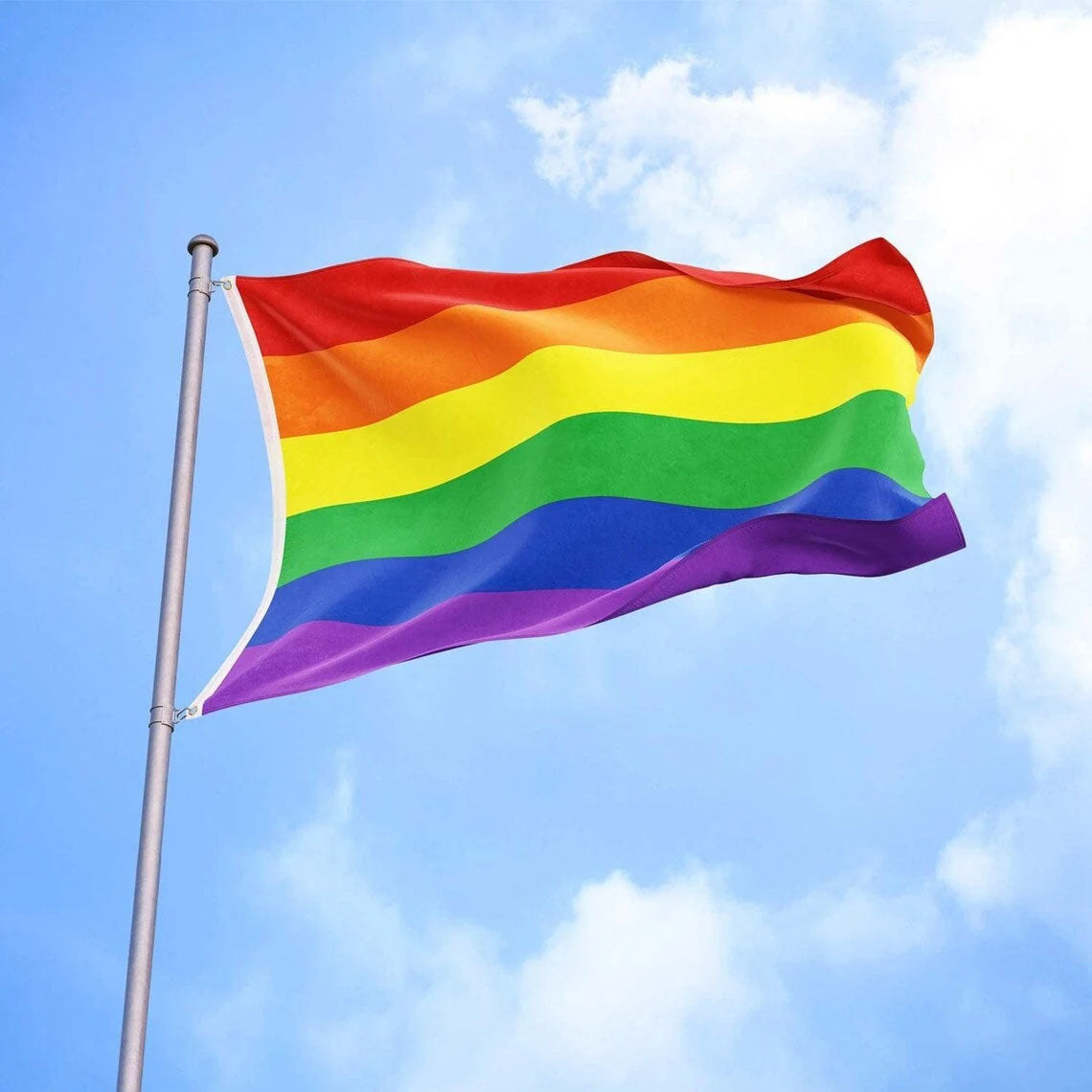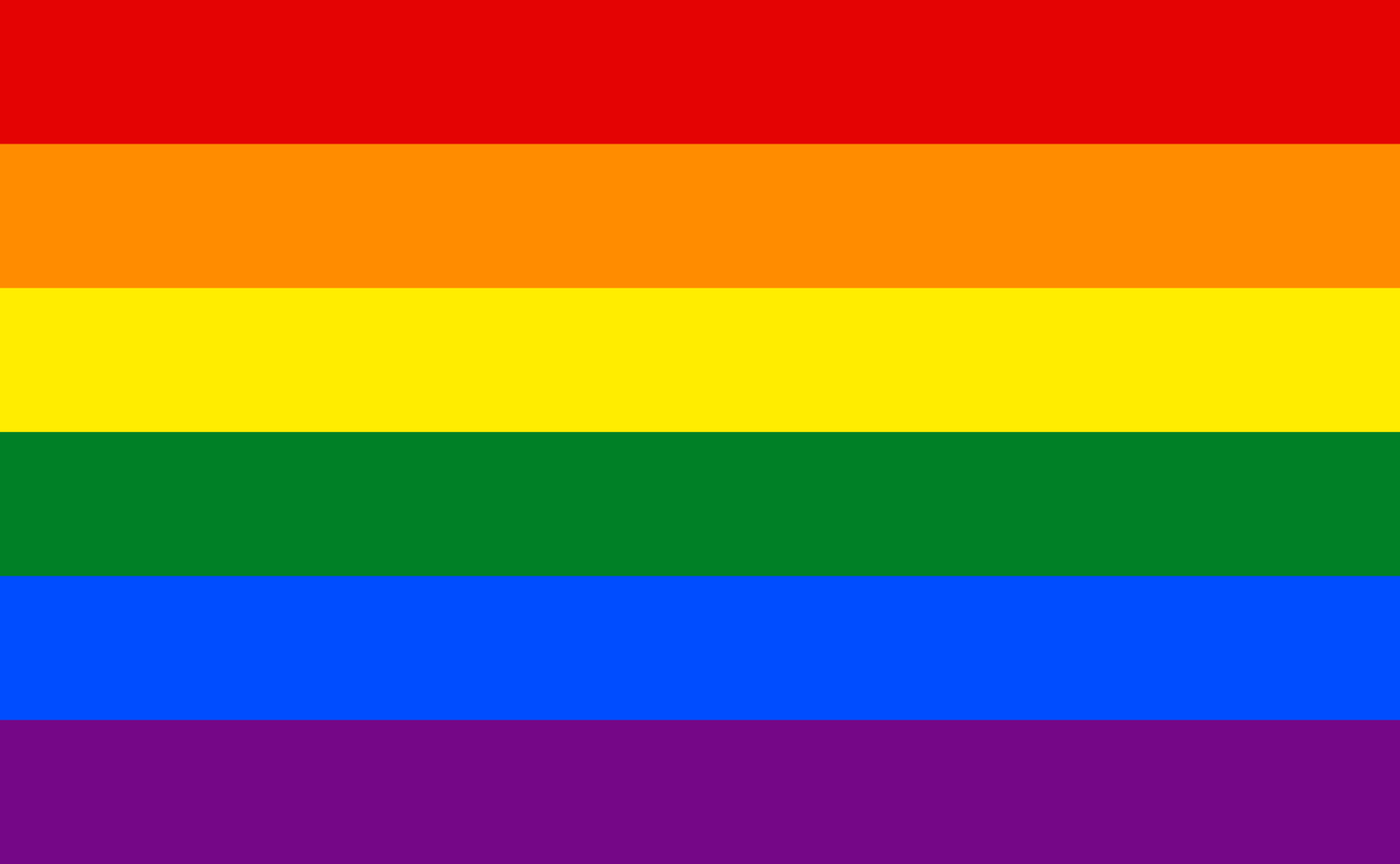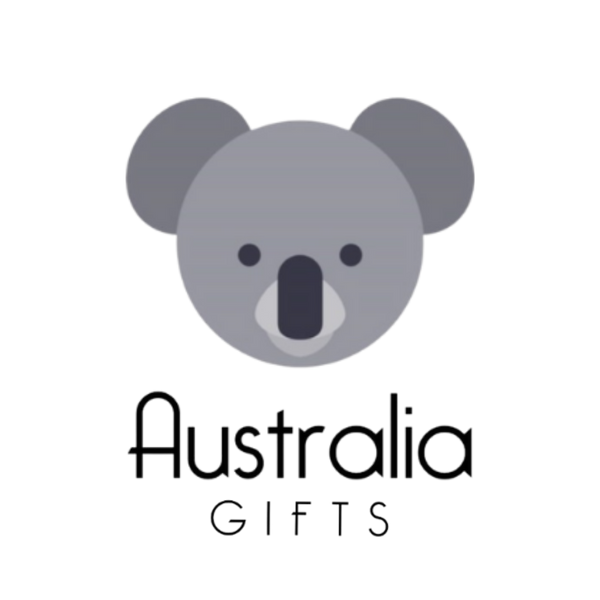Australia Gifts
Large Polyester Pride Flag LGBTQ+ Community
Large Polyester Pride Flag LGBTQ+ Community
Couldn't load pickup availability
Large Polyester Pride Flag LGBTQ+ Community
Product Details
- 90cm x 150cm / 3x5 FT
- Eco-friendly
- High colour fastness
- Double stitching: two rows of stitching on top and bottom hems
- Reinforced canvas header
- 100% Polyester 100D
- Solid brass grommets in strong canvas header
- Durable for years, weather resistant and machine washable
A little history about THE PRIDE
The Original Pride Flag
Jake Hall, a queer freelance journalist, unpacks the design inspiration and political history of the original, eight-stripe Pride flag, from 1978.
In late 1977, Kansas-born drag queen, artist and activist Gilbert Baker was tasked with designing vivid, joyous iconography for the LGBTQ+ community. Harvey Milk had just been elected to the San Francisco Board of Supervisors with a campaign centred on gay rights, and the city’s Castro Street was fast becoming – and is still known today as – an international hub for LGBTQ+ activism.
Gilbert Baker was born in 1951 and raised in Kansas. In 1970, eager to escape what he saw as the city’s conservative aura, he moved to San Francisco to serve as a military medic. He was honourably discharged in 1972, but decided to stay in the city – by then gaining a reputation as somewhat of a queer mecca – and dedicate himself wholly to drag, art and activism.
The inspiration for Baker's Rainbow Flag came in 1976, when he increasingly saw American flags displayed to mark the country’s bicentennial. “I thought a flag is different than any other form of art,” he explained to New York’s MoMA Museum in 2015. “It’s not a painting, it’s not just cloth, it is not just a logo – it functions in so many different ways. I thought that we needed that kind of symbol, that we needed, as people, something that everyone instantly understands.”
Rainbow motifs have been used for various reasons over the last few centuries, but Baker’s rainbow was conceived to represent the diversity of the LGBT+ community. It’s also thought to be a reference to Judy Garland, whose recording of ‘Somewhere Over The Rainbow’ had been claimed by the LGBTQ+ community. The initial design had eight stripes, with each colour representing a different value: pink for sexuality, red for life, orange for healing, yellow for sunlight, green for nature, turquoise for art and magic, indigo for serenity, and violet for spirit.
After securing $1000 in funding from San Francisco’s Gay Freedom Day decoration committee, Baker teamed with “tie-dye queen” Lynn Segerblom, also known as Faerie Argyle Rainbow, and fellow semester James McNamara to create the rainbow flags hoisted above the UN Plaza in 1978.
That year’s parade became famous for Harvey Milk’s rousing speech, which led to the defeat of the anti-gay Briggs Initiative.
These initial flags were made by a team of 30 volunteers, all of whom worked tirelessly in the top-floor attic gallery of San Francisco’s Gay Community Centre (then located at 330 Grove Street) to cut, dye and stitch the flags, which were so heavy that they required several people to lift them and a pick-up truck to transport them.
Harvey Milk was assassinated just five months later, skyrocketing demand for the flags to be mass-produced. Dye in certain colours was hard to find, so the eight-stripe version was streamlined to the six-stripe version now seen around the world.
Credits: History; Jake Hall; Google Arts & Culture.
https://artsandculture.google.com/story/MwWxZRneMapGFg
Jake Hall is a U.K.-based freelance journalist, and author of 2020 book ‘The Art of Drag’. They also dabble in consultancy and curation, homing in frequently on all things sexy, weird and queer.
Share




